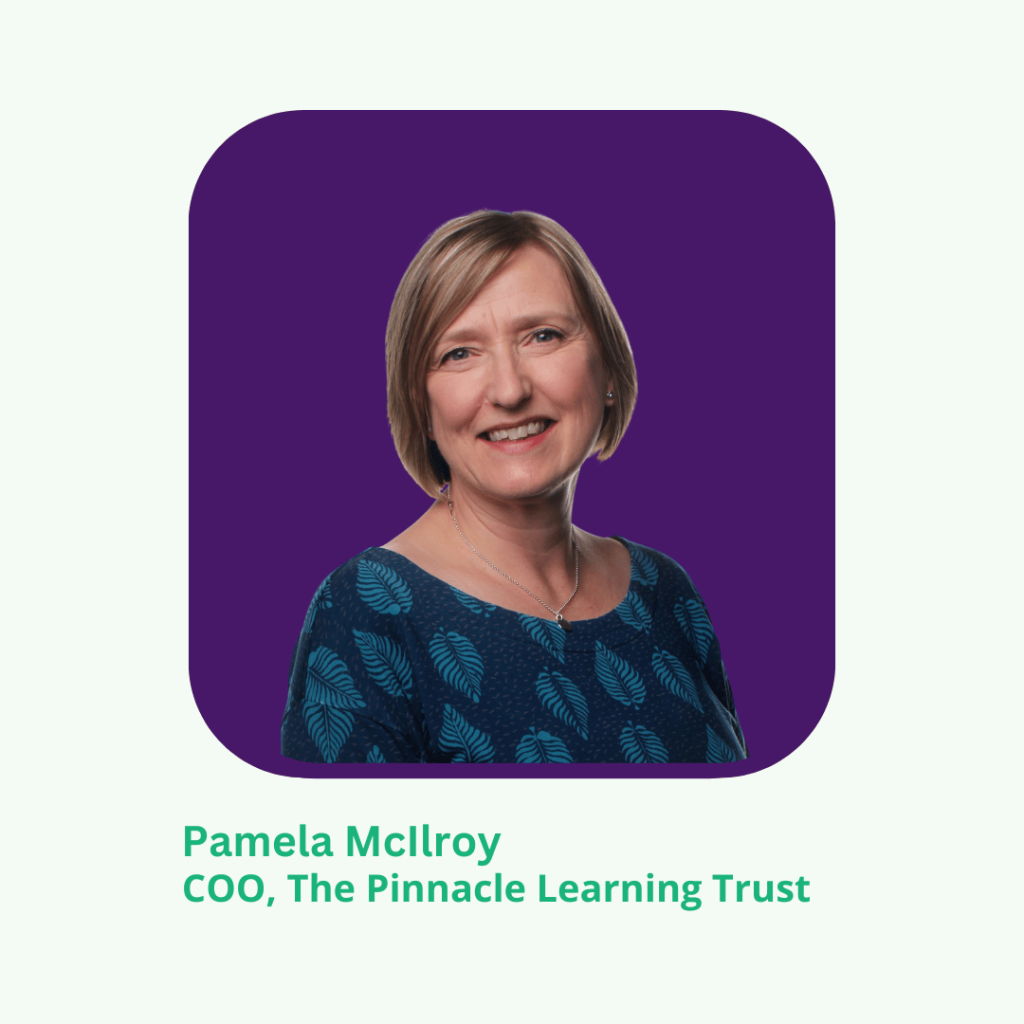7 May, 2024
Learnings from Edurio's recent leadership guide
Based on a series of detailed interviews with over 10 members of leadership teams at MATs including key figures as Chief Executive Officers, Chief Operating Officers, HR Directors, and Headteachers.
How to successfully lead a school trust?
Leadership’s impact on a trust’s eco-system
It goes without saying that the relationships people in leadership positions cultivate with their staff, pupils and community are critical to the success of an organisation. We see it reflected in data as well. In 2022/23, 46% of staff said that they feel completely or very appreciated by leadership for their work. However, one in four staff (25%) said that they feel only slightly appreciated or not appreciated at all. Staff feeling appreciated by their leadership is especially important for retention. Our data shows that out of all questions related to staff experience, this question has the strongest relationship with the risk of resignation.
But what does quality leadership look like in action? With that question in mind we set out to ask leadership teams who are achieving top leadership scores, which are above national benchmarks in Edurio data, what they think are the keys to their success. The guide is based on a series of detailed interviews with over 10 members of leadership teams at MATs. We spoke to a range of key figures including Chief Executive Officers, Chief Operating Officers, HR Directors, and Headteachers.
Top-performing leadership teams:
- Have clear team structures, a collaborative leadership style and an organisational culture focused on strong relationships
We identified three areas that play a part in successful leadership: the structure of the trust leadership team and how this filters down to the leadership team in schools; the somewhat subjective element of leadership style; and finally, the overarching emphasis on culture as a key element driving successful leadership.
Leadership Structure: Trusts and schools with strong leadership favour a distributed leadership model, sharing responsibilities across roles to ensure widespread leadership. This distribution empowers individuals at various levels, while being supported by governance and strategic planning, and aligns with school and community needs.
“We talk about it being in our DNA to train people and look after people, and it’s that civic responsibility, the wider responsibility than an individual school or trust. We’ve all got to do this. We’ve got to find ways of recruiting people into teaching…” – COO Christine Ellis, Cranmer Education Trust
Leadership Style: A recurring theme is the focus on a collaborative and open-door leadership style. This style is characterised by approachability, regular engagement with staff through informal chats, and strategic inset days aimed at sharing ideas. Trusts and schools invest significantly in developing their leaders through coaching, both external and internal.
“We have what we call Trust Strategic Leaders, which are some of our head teachers who have been given the opportunity to do trust-wide leadership work… it helps reinforce our principles of collective efficacy; we believe in collaboration.” – Director of School Improvement Andy Seymour, Nova Education Trust
Culture: The culture within these trusts and schools prioritises strong relationships, transparency, and responsiveness, ensuring that staff, pupils, and the wider community feel valued and supported. Trusts recognise the importance of extending their impact beyond the immediate school environment and engaging in community and outreach activities.
“The premise of the whole trust is relationships. So, the relationships between our children and our staff and our staff and each other, our schools and the wider community. Everything is driven through a lens of positive relationships and having a positive impact.” – CEO Gavin Booth, Infinity Academies Trust
2. Know which practises will yield the biggest impact
In 2022/23, about one third of staff (34%) said that their feedback to the leadership always or often has an impact. However, about one in four (27%) of staff said that their feedback rarely or never has an impact. Moreover, only 17% of staff with a high risk of resignation always or often see that their feedback to the leadership has an impact, while 48% of staff with a low risk of resignation always or often see that their feedback to the leadership has an impact.
How staff needs are taken into account and the way feedback is used to improve as an organisation are critical to success. The majority of the leadership teams interviewed mentioned the topics of collaboration, staff wellbeing, having a strong people strategy in place, and innovation throughout the trust. These could be considered the areas that leaders have the biggest influence and power to drive impact for their staff and community. But underlying these practices is the humble understanding that regular check-ins and reflection are at the heart of understanding and listening to the people in the organisation.
Excerpt from Pinnacle Learning Trust
Being on the Same Page
The impact of Pinnacle Learning Trust’s distributed leadership is particularly evident in its approach to communication.
Reflecting on the Trust’s high leadership scores, Pamela McIlroy, COO, is very straightforward: “You can be doing wonderful things, but if you are not communicating that to your staff, then none of you are on the same page.” The Trust Executive Team’s bi-weekly meetings, which include communications to and from the principals and the CEO’s involvement in meetings at different academies, reinforce this inclusive communication structure. Cross-trust groups, such as the safeguarding and staff engagement groups, further consolidate this approach by ensuring consistency and fostering a sense of belonging across the Trust.
Excerpt from The Priory Federation of Academies Trust
Staff Wellbeing Champions
In recognition of the recruitment and retention issues across the local and national sector, due to workload pressures and stress, Trust and school leaders at The Priory Federation of Academies Trust dedicated efforts to improve staff wellbeing before it became an issue.
As a result, the Trust set up a strategic group with representatives from the central teams and schools, which eventually appointed a Staff Wellbeing Director.
“From the midday supervisor, who perhaps comes to work for an hour a day, through to the CEO, who is probably regarded as the most important person in the Trust, everybody is treated equally in that respect. Staff wellbeing is about every member of staff.” – Primary Executive Jill Marston
The introduction of Mental Health First Aiders and Staff Wellbeing Champions throughout the Trust’s schools and central service teams demonstrates a multi-layered approach to wellbeing. This structure ensures staff have immediate support contacts whilst maintaining a seamless link of communication and support from the Trust to individual academies. The role of Staff Wellbeing Champions is to signpost colleagues to relevant charities, organisations, or counselling services. The Trust also brings all the champions together two to three times a year to share best practice and to brainstorm further solutions. Through the training of representatives as Mental Health First Aiders and the establishment of a network of Wellbeing Champions, the Trust has ingrained a culture of care that is both accessible and robust.
The new resource by Edurio, “Leadership Strategies in School Trusts”, explores what it takes to be a high-achieving leader in a Multi-Academy Trust (MAT). The guide includes sections on Leadership structures and styles, practice and impact, challenges and solutions, and advice to leaders. We finish the guide with advice for CEOs on retention from John Murphy, Education Leadership Mentor and ex-CEO of one the largest UK MATs. The conclusion from Ambition Institute’s Rich Bell, Director of Policy and Practice, and Katy Patten, Dean of Learning Design, encapsulates the profound influence of strong leadership on fostering retention.




